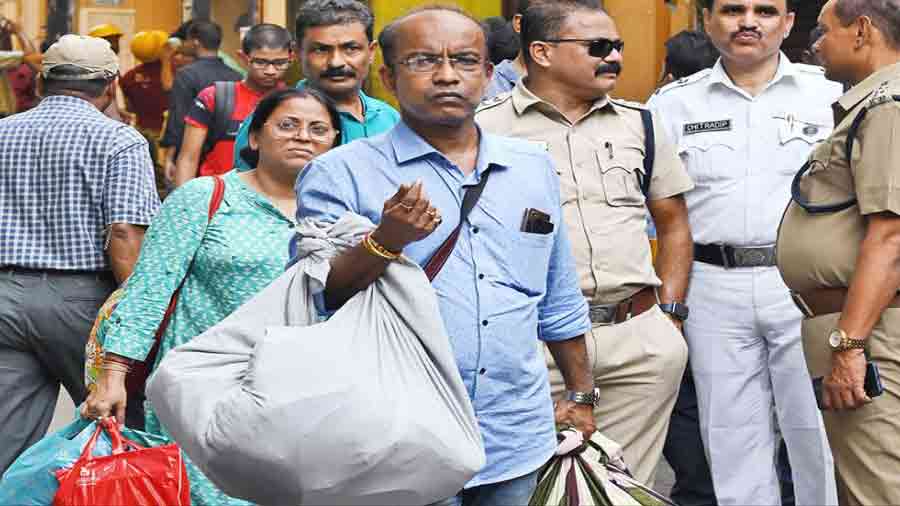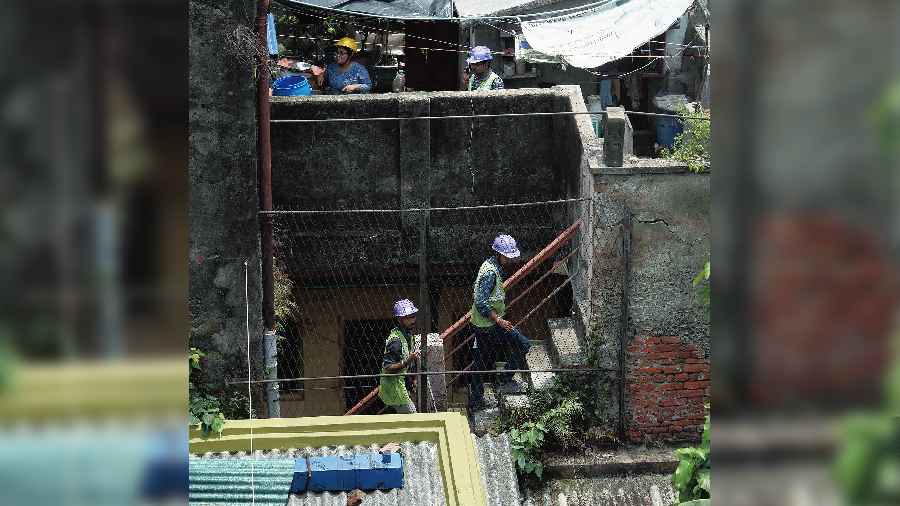A 2.45-km stretch of the 32-km East-West Metro has turned out to be a gigantic challenge for its makers. The stretch has seen three accidents in as many years. When cracks appeared in houses for the first time in September 2019 after a tunnel-boring machine hit an aquifer, Metro officials had pointed to unfamiliar terrain. But two reruns — in May and on Friday — have prompted many questions. The Telegraph lists some of them
Constant monitoring
Many residents alleged lack of 24x7 monitoring of the underground work. “Every time, the cracks bring attention to the work. Why can’t we be alerted in advance?” asked one of them.
In Bowbazar, the seepage of water started at night and in the early hours, this time as well as in May. Asked if the work is monitored by experienced engineers 24x7, a KMRC official said: “We have a senior engineer supervising the work in each shift.” An engineer with experience in tunnel boring said it was not enough to merely have an engineer. “You need someone experienced in tunnel boring to respond to an emergency.” He said: “There are several blind spots. It is virtually impossible to know or map all the aquifers at one go. That is why constant observation is important.”
Local councillor Biswarup Dey said that since May, residents have been asking for a full-time onsite engineer in Bowbazar. “Till date that has not happened. As a result, there has been a grave lapse in communication between the workers and senior KMRC officials,” Dey said.
Missing report
After the May accident, a team from IIT Roorkee was brought in for a detailed examination of the soil. The soil test report is still pending, said Metro officials. Members of a team from Jadavpur University said their brief after the May 11 disaster was to assess the condition of the buildings and not of the ground underneath or to coordinate with KMRC engineers for the next course of action.
“We have been told to draw up a questionnaire for the KMRC engineers about how they want to proceed next. We will send that by Monday,” said Himadri Guha of the civil engineering department from Jadavpur University. N.C. Karmali, project director of KMRC, said the stretch between Sealdah and Esplanade was treacherous. “The water table in Bowbazar is very close to the surface and unlike other forms of soil, the one here is completely saturated with water with no air trapped in between,” he said.
KMRC officials said they had been using the latest technology. “A surface area covering a metre more than the 3.5 diameter of the tunnel that was being constructed underground was grouted to ensure there was no seepage,” said C.N. Jha, managing director of KMRC.
Two stretches
An engineer who has in the past been associated with the project said the stretch from Howrah to Esplanade also had challenging sections. “Despite the challenges, work was done efficiently. Repeated accidents in Bowbazar means something is not right in the approach,” he said.



